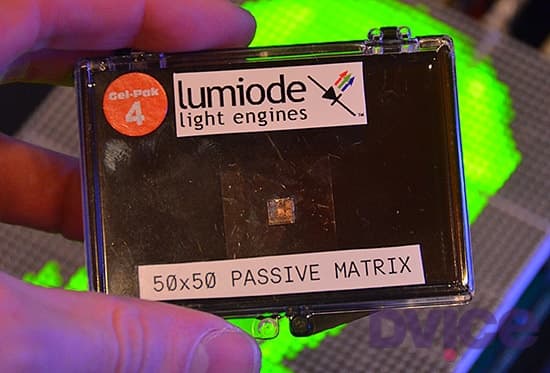Micro-Display LED Might Have Solved At Least One Google-Glass Issue
As Google Glass takes center stage, all eyes are set on the technological marvel, quite aptly. But nascent as it is, the Glass comes with its share of woes. #-Link-Snipped-# mentions the possibility of compromised quality on the display screen in bright sunlight. A circumvent is tricky to achieve, and only comes at the cost of draining the battery life. Lumiode, a Brooklyn-based startup is making its way towards a possible solution. Most displays, including smartphone screens, have a light-emitting backplane and use filters to account for the individual color pixels that collectively form images. This trade-off reduces the overall brightness and wastes energy. On the other hand, Lumiode’s LED design uses the light-emitting diodes as the pixels. The LED are arranged into arrays, with a layer of silicon on top of each individual LED that checks the amount of light it emits. This ensures that no light is lost through filtering, resulting in smaller, brighter, more energy-efficient head-mounted displays.
 Standard components and processing technique go into the making of a Lumiode display, which by the way, isn’t very expensive. The company backs its technology and claims it is superior by being 30 times brighter and 10 times more efficient than the competition. Though, it shall take a while before it gets ready to grace a Google Glass-like product. Nevertheless, a possible solution if not the salvation.
Standard components and processing technique go into the making of a Lumiode display, which by the way, isn’t very expensive. The company backs its technology and claims it is superior by being 30 times brighter and 10 times more efficient than the competition. Though, it shall take a while before it gets ready to grace a Google Glass-like product. Nevertheless, a possible solution if not the salvation.
Source: #-Link-Snipped-#

Source: #-Link-Snipped-#
0
